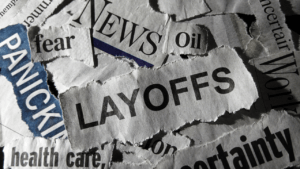As October closed with all major indices dropping for a third straight month (only for the 9th time in the last 100 years was that the case for S&P500), the FOMC will in all likelihood pass on the opportunity to tighten monetary policy further tonight. Opportunity ? Please allow me to explain why. The vast majority of US numbers have since their last meeting come in as expected or stronger than forecasts called for. Take your pick of consumer spending, industrial production, employment or price data, they all painting the picture of an economy refusing to slow down. The price data (CPI, PCE, PPI etc) should be the most important piece of the Fed puzzle, and it’s delivering a very consistent verdict – CPI yoy of 3.7%, CPI 6m annualized of 3.8%, and CPI 3m annualized of 4.8%, while Core is showing 4.1% yoy, 6m annualized of 3.5%, and 3m annualized of 3.1%. Repeat the same exercise with the Fed’s favourite measure PCE (or Core PCE to be precise), it works out to 3.4% / 3.2% / 4.0%. Using their very favourite measure of Core PCE, the numbers look like this : 3.7% / 2.8% / 2.4%. I’m not going to bore you with showing actual numerics for PPI, trimmed CPI or a whole other variety of price measures (or embark on another rant on how these are notoriously under reported because of make-believe “hedonistic” adjustments), because by now I think you see my point. The Federal Reserve is nowhere near it’s official target, and the number of measures pointing to the fact that they are well on their way to achieving it can be countered by another set showing exactly the opposite.
Only very recently have the market seemingly woken up to this uncomfortable fact – there will be no monetary easing anytime soon, unless the Fed is first prepared to move policy into restrictive territory. Hence this should be seen as an opportunity. Barring a spectacular crash (could happen, but delta quite low) or the powers of the central bank being transferred to politicians (could and will probably happen at some stage, but very low delta for now), the Fed can’t cut and run the risk of a rout in the value of Fiat money. Neither of those scenarios are great for financial assets – trust me. In the first one you’ve already been buried, in the second one you will be. For anyone believing that the latter will bring some benefits, I suggest checking how well Turkish assets have done the last couple of years.

Enough of that (for now) as we enjoy All Saints Day, having come through an evening of pesky/adorable (delete as appropriate) children frantically ringing our door bell and being indulged/bribed with sweets. They were all fully kitted up, and some parents had clearly brought in help to assist the youngsters with their gear. That made me ponder the number being tossed around regarding the US portion of spending on clothes, props and toys associated with Halloween – $12bn. That works out to the average US family of four spending about 150 bucks for having the pleasure of pissing half the neighbourhood off. Staggering. Not only would a substantial part of the stuff bought have been labelled “sustainable”, but building your business model on that spending extending into the future will ultimately prove totally unsustainable. The world is changing – rapidly – and maneuvering this path will prove more and more difficult going forward. The last 24 months have richly rewarded the most skilful of portfolio managers, regardless of asset class, and more or less severely punished the usual also-rans. That will not change meaningfully going forward. Far too many managers I know don’t believe, see, or have the ability to see that the world has changed, and stick with outdated, obsolete ways of managing portfolio risk. Avoid them. Like the plague. They will not perform consistently going forward (every dog has his day, but I think you get my meaning of “consistently” here). Beta will not deliver, and genuine alpha-capturing ability will be hard to find, but imperative for anyone wanting to preserve their wealth. Find those managers and stick with them.
Returning to the issue of inflation. The price pressures we are witnessing is the result of us having used up the planet’s resources. Competition for them will increase. Reaching capacity limits have devastating consequences for the assumption that we can go on like before, or business models built on that very assumption. The cost-of-living-crisis a large part of the world has experienced is the direct result of these resources running out. Adjust accordingly, because monetary policy as a tool no longer has the ability to alleviate future pain. When you persistently use up more than you put back, you will eventually run out of road.
The total, global amount of debt we have mindlessly accumulated to keep on doing tomorrow what we did yesterday will not vanish without substantial disruption to markets. I know staunch believers in MMT disagree, but I’m happy to completely ignore them by the way. The demands put on our planet to keep providing us with all the resources we have taken for granted for centuries continues unabated, and unless we alleviate that pressure, the planet will keep rebelling more and more violently. This will have a devastating outcome for portfolio wealth. Easing the price of money will increase, not dampen, the pressure on our planetary limits, so in that sense we have reached the limits of what monetary policy can hope to achieve. Central bankers in this, brand new world are essentially impotent.

For those of you who think that the adverse weather events we are witnessing at the moment won’t matter in the grand scheme of things when it comes to our financial wealth, I can only thank you for giving me the opportunity to keep capturing all that wonderful alpha you are providing, while pitying those who have to rely on your performance.



